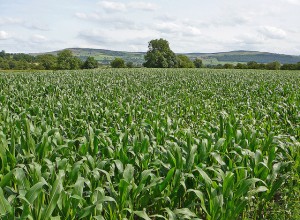Coated seeds drive use of neonicotinoid insecticides
A new study published in the journal Environmental Science and Technology has found that neonicotinoid use is increasing rapidly in the United States. Scientists analyzed publicly available data in order to understand how neonicotinoid use has been changing since they first came on the market in 1994. This analysis is unique because unlike the national pesticide survey that estimates and interprets trends in pesticide use, it included data on neonicotinoid-coated seeds which are typically omitted from other pesticide use analyses. The results show that neonicotinoid use began dramatically increasing in 2003 when seed treatments for maize, soybean, wheat and cotton became available. Not surprisingly, they also show that when insecticides from coated seeds are included in the analysis, actual neonicotinoid use in the United States is much higher than had been previously calculated. The widespread use of neonicotinoid-coated seeds “may have unintended consequences, namely resistance in target pests, outbreaks of non-target pests, and pollution with detrimental effects cascading to wildlife,” the study notes.



